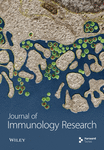PAH- and PCB-induced Alterations of Protein Tyrosine Kinase and Cytokine Gene Transcription in Harbor Seal (Phoca Vitulina) PBMC
Abstract
Mechanisms underlying in vitro immunomodulatory effects of polycyclic aromatic hydrocarbons (PAHs) and polychlorinated biphenyls (PCBs) were investigated in harbor seal peripheral leukocytes, via real-time PCR. We examined the relative genetic expression of the protein tyrosine kinases (PTKs) Fyn and Itk, which play a critical role in T cell activation, and IL-2, a cytokine of central importance in initiating adaptive immune responses. IL-1, the macrophage-derived pro-inflammatory cytokine of innate immunity, was also included as a measure of macrophage function. Harbor seal PBMC were exposed to the prototypic immunotoxic PAH benzo[a]pyrene (BaP), 3,3′,4,4′,5,5′-hexachlorobiphenyl (CB-169), a model immunotoxic PCB, or DMSO (vehicle control). Exposure of Con A-stimulated harbor seal PBMC to both BaP and CB-169 produced significantly altered expression in all four targets relative to vehicle controls. The PTKs Fyn and Itk were both up-regulated following exposure to BaP and CB-169. In contrast, transcripts for IL-2 and IL-1 were decreased relative to controls by both treatments. Our findings are consistent with those of previous researchers working with human and rodent systems and support a hypothesis of contaminant-altered lymphocyte function mediated (at least in part) by disruption of T cell receptor (TCR) signaling and cytokine production.




